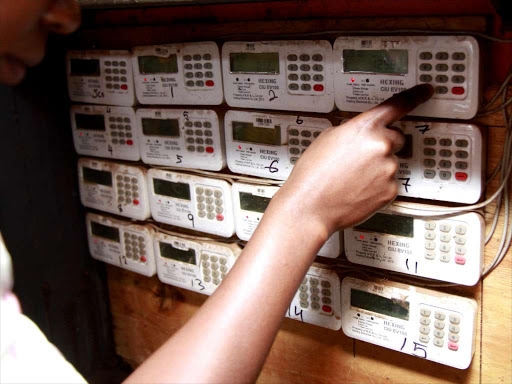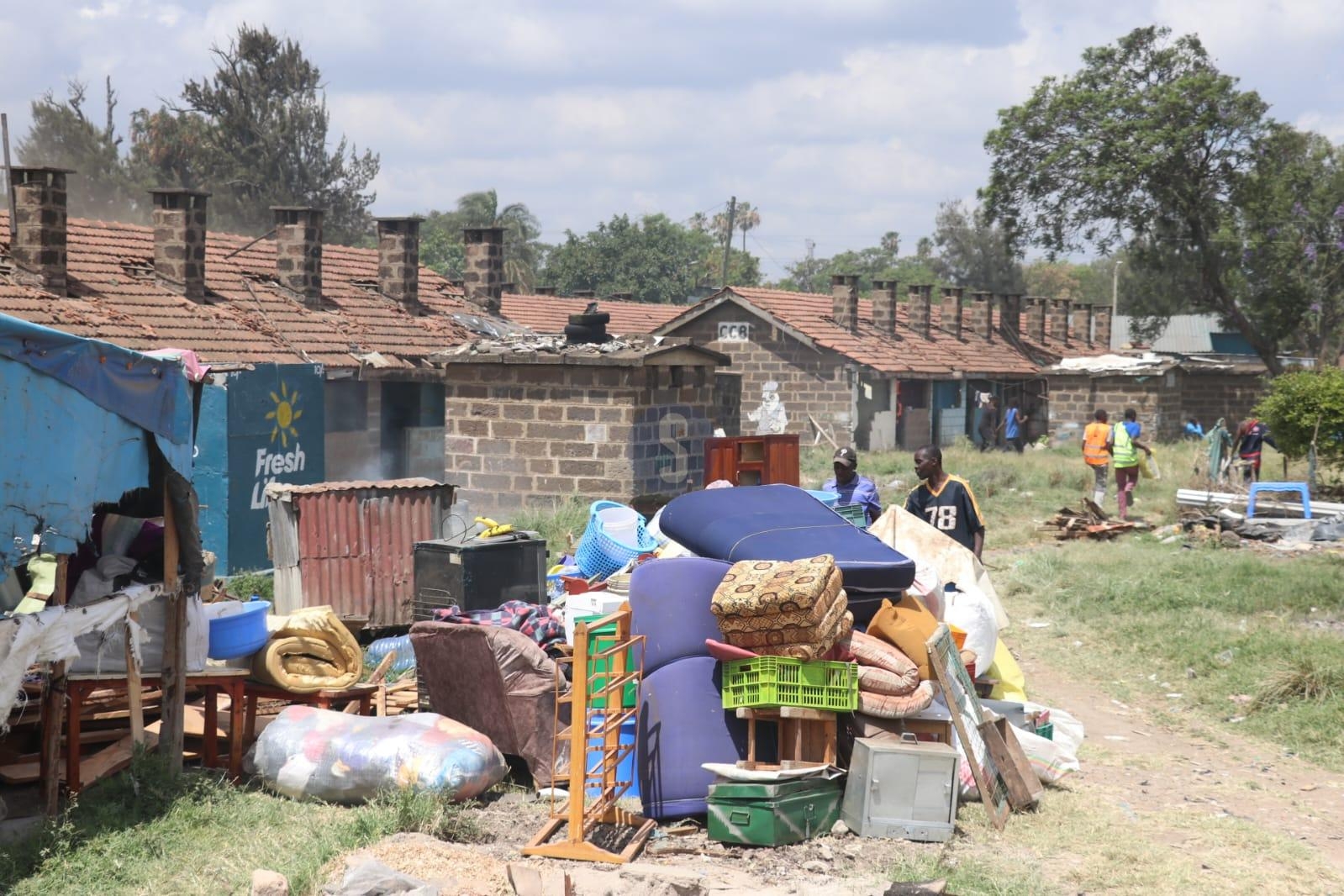The room where starving kids are resuscitated at the Wajir County Referral Hospital is deathly quiet.
This is odd. Children’s wards are often noisy with cries, murmurs and movements.
But the children admitted here are spookily calm and expressionless, with glassy eyes. Although they are hungry and hurting, they have no energy to cry.
Their bodies are now desperately directing any energy left to keeping key organs functioning.
“Since the drought worsened in October, we have been receiving at least 10 severely acutely malnourished children every week,” says Dr Zahara Haji, a senior medical officer in the paediatric unit.
They are so severely wasted that they look almost elderly. At this stage, the body has already begun cannibalising itself — eating its own flesh to keep the child alive.
Dr Zahara says the situation shows the little-spoken-about consequence of hunger in Kenya: it kills.
Last month, the facility lost one severely malnourished boy, who was admitted for one week.
“He had developed blood sepsis and electrolyte imbalance,” Dr Zahara says. “We did our best to treat him and we suspect it’s sepsis that caused his death.”
Since the drought worsened in October, we have been receiving at least 10 severely acutely malnourished children every week
INFECTIONS THE FINAL BLOW
While malnutrition by itself can cause death, it greatly increases susceptibility to and severity of infections, Zahara says.
“Mostly it is the infections that finally kill and not the hunger,” she explains.
Death by starvation is slow and tragic. When people go for days without food, the body begins feeding on itself.
First, it consumes its stored carbohydrates and fats, if any. Children under five years degenerate faster because they have little fat reserves.
Then metabolism slows and, consequently, the body temperature drops and the child can feel chilled. The immune system begins to break down, leaving the body defenceless against other diseases.
Eventually, there is nothing left for the body to scavenge on except muscle, including the heart muscle. From here, death is not far.
Key body organs begin to shut down. “The kidney and liver are the first to go, followed by the brain,” says Zahara. Finally, the heart stops.
Such deaths do happen in Kenya but are often attributed to the opportunistic infections.
The Kenya Demographic and Health Survey (2014) shows Nyanza and northern Kenya counties have the highest number of children who die before their fifth birthday.
Migori leads with 150 deaths per 1,000 children. Others are Mandera (131), Wajir (106), Homa Bay (99), Siaya (98), Tana River (83) and Lamu (83).
Last month, local non-profit Save The Children estimated there are about 652, 960 severely acutely malnourished children in Kenya who need health services to survive.
TOO WEAK TO EAT
The crisis has been festering quietly since January. Unicef says about 28,904 children (15,055 girls and 13,849 boys) were admitted for treatment of severe acute malnutrition between January and May 2021.
The emergency in the north was masked by the availability of food in other parts of Kenya.
In September, President Uhuru Kenyatta declared the drought in Wajir, Kilifi, Garissa, Isiolo, Mandera, Samburu, Tana River, Lamu, Marsabit and Turkana counties a national disaster.
The government and select NGOs have since increased donation of foods to these regions.
But some children are too weak to even eat when the relief food finally comes.
Dr Zahara says many severely acutely malnourished children no longer have an appetite and need medical attention before they are given any food.
Some suffer from withered intestines and cannot digest food, and can only be fed intravenously.
Others, apart from losing appetite, also lose the ability to chew.
“For such, we can use a feeding tube through the nose, but many parents do not accept it, so we have discontinued it,” she says.
A child is only discharged after being treated for any infections and regaining appetite.
Fortunately, most malnourished children in Wajir are now being saved before hospital admission.
Save The Children Kenya has mounted operations across the county to identify them.
Abdullahi Aden, the programme manager for Wajir, says 17 per cent of children in the county are acutely malnourished.
This is above the 15 per cent emergency threshold.
He says: “The situation is dire and if the November rains will be depressed as predicted, then the situation will worsen.”
The NGO, which has operated in Kenya since 1950, is currently reaching 97,000 households with lifesaving interventions, Abdullahi says.
They also identified 3,000 families, who are receiving Sh5,000 monthly cash transfers for three months until December.
“We are further training new health workers in 54 health facilities in malnutrition management,” Abdullahi adds.
To identify needy cases, STC officials and county government health workers mount outreaches in each ward once every month.
One such outreach recently took place at Jira village in Hadado subcounty.
Kulay Abdullahi, 29, and her two-year-old son were among villagers admitted into a nutritional supplementation programme.
Kulay received fortified porridge flour, while her son received a monthly supply of Plumpy nut, a ready-to-eat peanut paste fortified with proteins and vitamins.
“I was told if the child does not get this food, he can even die,” she said.
Kulay weighed only 37kg. The girth of her son’s arm fell within the orange part of the mid-upper arm circumference band. This indicates moderate acute malnutrition, which means the child should be immediately referred for supplementation.
The yellow part of the band indicates a child is at risk of acute malnutrition and should be followed up on for growth promotion.
The red portion of the band indicates the child is severely malnourished and at risk of death.
Lastly, green part of the band indicates the child is not malnourished.
Those admitted on the nutrition supplementation programme must exit after three months, although they could be readmitted if there is no improvement.
THOUSANDS STARVING
Wajir director of public health Dr Dahir Somon says by September, the county had 45,000 people with moderate acute malnutrition (MAM), also known as wasting.
Another 6,300 had severe acute malnutrition, which, if left untreated, can result in death.
He says the situation will worsen if it does not rain in November.
“Most households are pastoralists, thus reduction in milk consumption will hurt the nutritional status of children under five years of age.”
Somon adds the county and Save The Children are collaborating in the outreaches, cash transfers and training of health workers.
Separately, Abdikadir Hussein, the county director for disaster management and humanitarian coordination, says the last time the region received adequate rains was in 2019.
He says the current hunger situation was compounded by the invasion of desert locusts since early 2020.
Hussein says the county is now moving away from food donations to cash transfers to needy families.
“Giving relief food is cumbersome, expensive because you need to store and transport it and yet the person may also have other needs,” he says.
“Cash transfer brings flexibility and dignity. They can also buy animal feed, water and pay school fees.”
The county programme will give Sh5,000 per month to about 20,000 identified households.
“This will cover 120,000 people, and we hope partners will support the remaining,” he says.
The local government is also trucking water around the county for domestic animals and livestock.
However, Hussein says this is expensive and unsustainable, so they will have to think of better ways to supply water.
He says the recurring droughts might be a norm Kenya will need to learn to live with.
Currently, the few acutely malnourished children who reach Wajir hospital are being saved.
But there is evidence that children who experience starvation during their first few years of life, even if they survive, can suffer life-long consequences.
Dr Zahara says implications include potentially lower IQs, poorer performance in school and poor physical health for life.
"Their future is stolen before it even began," she says.
Edited by T Jalio













